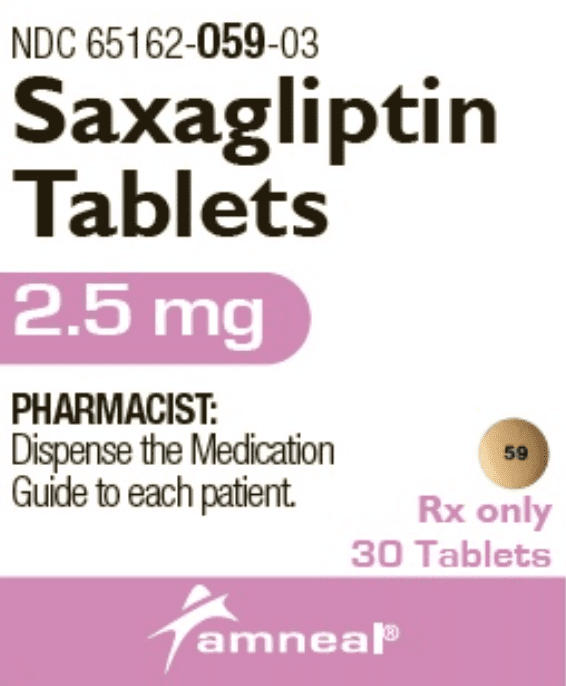Saxagliptin Dosage
Medically reviewed by Drugs.com. Last updated on May 12, 2025.
Applies to the following strengths: 2.5 mg; 5 mg
Usual Adult Dose for:
Additional dosage information:
Usual Adult Dose for Diabetes Type 2
2.5 or 5 mg orally once a day, regardless of meals
Coadministration with strong CYP450 3A4/5 inhibitors: 2.5 mg orally once a day
Use: Adjunct to diet and exercise to improve glycemic control in adults with type 2 diabetes in multiple clinical settings
Renal Dose Adjustments
Mild renal dysfunction (CrCl more than 50 mL/min): No adjustment recommended.
Moderate or severe renal dysfunction (CrCl 50 mL/min or less): 2.5 mg orally once a day, regardless of meals
Liver Dose Adjustments
No adjustment recommended.
Dose Adjustments
Concomitant use with an insulin secretagogue or with insulin: A lower dose of insulin secretagogue or insulin may be required to minimize the risk of hypoglycemia.
Precautions
Safety and efficacy have not been established in patients younger than 18 years.
Consult WARNINGS section for additional precautions.
Dialysis
Hemodialysis: 2.5 mg following hemodialysis
Peritoneal dialysis: Data not available
Other Comments
Administration advice:
- Tablets should not be split or cut.
- This drug can be taken with or without food.
- If a dose is missed, take the next dose as prescribed, unless otherwise instructed. Instruct patient not take an extra dose the next day.
General:
- Consider the risk and benefits of therapy in patients who have known risk factors for heart failure.
Monitoring:
- Hematologic: Blood glucose and HbA1c
- Cardiovascular: Signs and symptoms of heart failure
- Monitor for signs and symptoms of pancreatitis.
Patient advice:
- Patients should be informed that acute pancreatitis, heart failure, and allergic reactions have occurred with use of this drug; they should understand the importance of reporting signs and symptoms of these conditions and when to promptly seek medical attention.
- Patients should understand the importance of adhering to dietary instructions and regular physical activity; they should be able to recognize the signs and symptoms of high and low blood sugar and how to treat.
- During periods of stress such as fever, trauma, infection, or surgery, management of diabetes may change and patients should be advised to seek medical advice.
- Instruct patients to contact their health care provider if they develop severe and persistent joint pain.
Frequently asked questions
More about saxagliptin
- Check interactions
- Compare alternatives
- Pricing & coupons
- Reviews (17)
- Drug images
- Side effects
- During pregnancy
- Drug class: dipeptidyl peptidase 4 inhibitors
- Breastfeeding
- En español
Patient resources
Other brands
Professional resources
Other brands
Related treatment guides
See also:
Further information
Always consult your healthcare provider to ensure the information displayed on this page applies to your personal circumstances.


